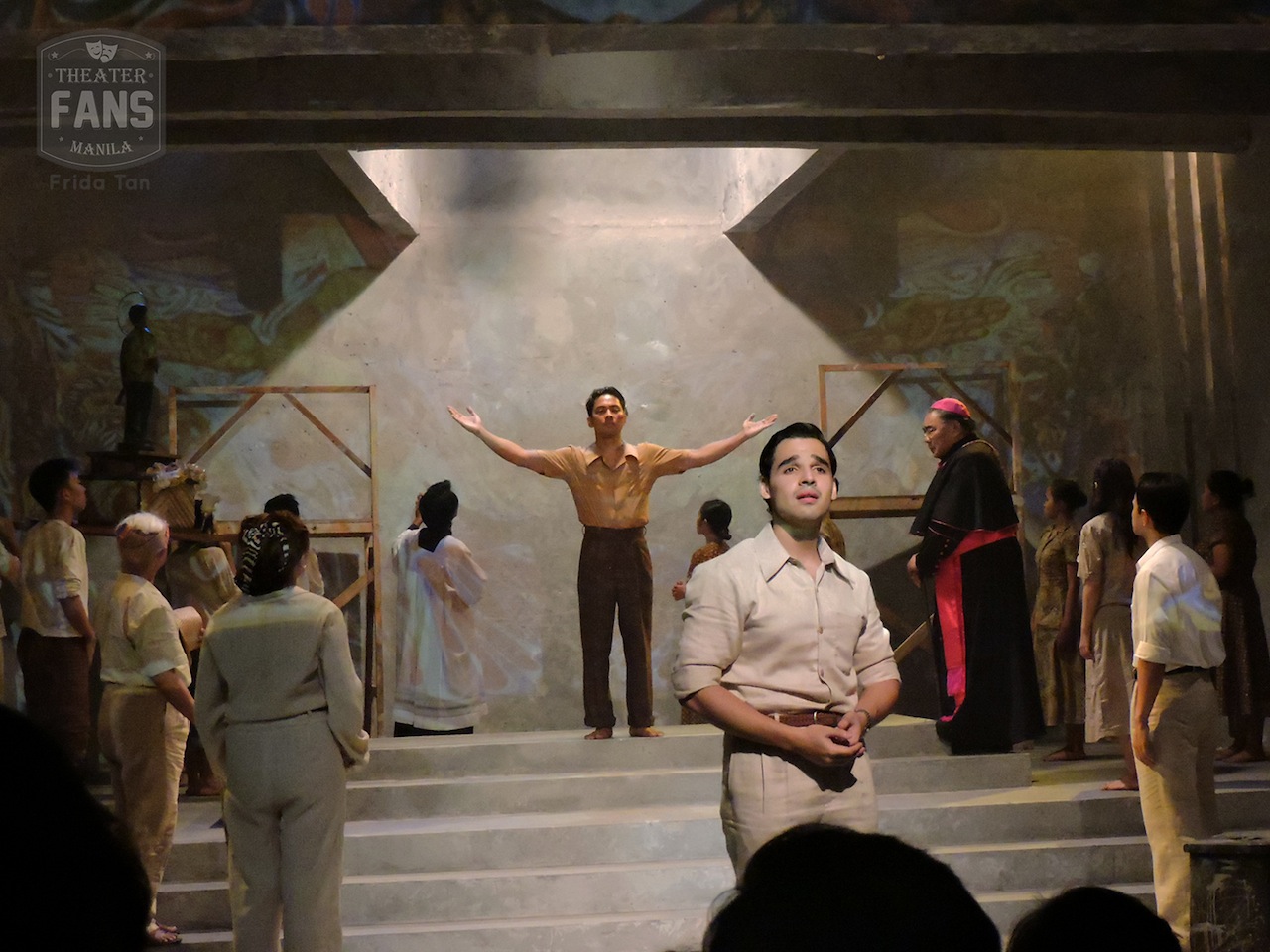
REVIEW: UPPT’s “Angry Christ” – a mesmerizing collaboration
Prolific playwright Floy Quintos combines historical fact and artistic license in UP Playwrights’ Theatre’s (UPPT) Angry Christ.
The play begins with a lecturer (Mica Pineda) who starts off with a background on Alfonso Ossorio’s famous painting, ‘The Last Judgement’, known to many as the ‘Angry Christ.’ She talks about the 36×20 mural with the help of lighting projections that zoom into every significant part of the painting.
The stage is set in an empty, cemented chapel with an altar in the middle. Streaks of light come in from the sides that convey natural sunshine. The story unfolds in 1949, where wealthy Filipino-American painter Alfonso Ossorio arrives in the Victorias Sugar Mill in Negros Occidental with his family. We learn that this is the first time that he’s come back to the Philippines since he left the country as a child. His younger brother Frederic (Randy Villarama) has commissioned a foreign architect to build the chapel, and Ossorio has brought the Countess Ade de Bethune (Banaue Miclat-Janssen) to design the chapel’s mosaics. They have been given sakadas (laborers) to help them complete their task, and Anselmo (Kalil Almonte) has specifically been assigned to be Ossorio’s assistant. Throughout the play, the audience goes through the journey with Ossorio, reliving memories from his past as a gay man in a conservative family, and back in 1949-1950 as he struggles to finish his mural.
The lighting design of Monino Duque proves an ingenious storytelling tool as it brings the audience from one time period to the next. With the help of Dexter Santos’ direction, the transitions are fluid, and the storytelling clear as crystal.
Throughout the rest of the play, we see Ossorio’s inner turmoil as he wrestles with several dichotomies—being a gay man in a conservative, religious society, having a more modern sensibility whilst painting for a traditional province, and being a wealthy man working amongst poor laborers. All these affect him in painting his non-traditional would-be masterpiece, including his pivotal encounter with labor leader Jose Maria Nava (Neil Tolentino) who, before the latter’s incarceration, convinces him to look at the wounds of the everyday man and “Make it a revolution!”
Lighting projections of Ossorio’s paintings are also flashed throughout the show. The collaboration between production designer Gino Gonzales, lighting designer Monino Duque, and director Dexter Santos is a theatrical marvel; the non-linear storytelling is rarely told as effortlessly and as stunningly. The chemistry of the entire cast, led by remarkable performances by Nel Gomez (this comes right after his starring role in the critically-acclaimed My Name is Asher Lev) and co-star Kalil Almonte, is palpable.
With a piece that runs for almost 3 hours (with intermission), you would want nothing else but to hold on to every word of this inspired and largely imagined –yet grounded on historical fact–piece. The finale, where the piece is finally revealed to the people, is a sight to behold.
The play runs until May 14 (Wednesdays to Fridays at 7pm; Saturdays and Sundays at 10am and 3pm) at the Wilfrido Ma. Guerrero Theater of UP Diliman.


